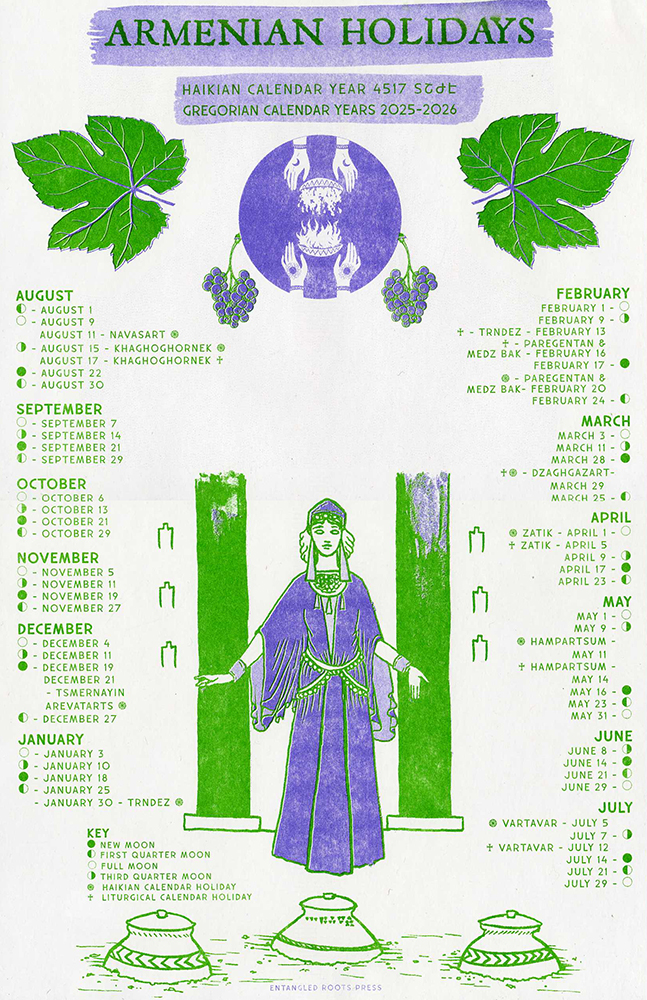Description
Navasart (new year) was the name of the first month of the ancient Armenian calendar, and the first day corresponds to August 11th in the Gregorian calendar that we use today and commemorated the beginning of Armenian history. According to legend, on August 11, 2492 BCE, the patriarch Hayk killed the Babylonian tyrant, Bel, thus founding the Armenian nation.
August 11, 2025, according to the “Haikian calendar” (Հայկեան տոմար), which was the oldest one in use, is 1 of Navasart of the Armenian year 4517. The day marks the beginning of the Haikian calendar.
This calendar was created to make the holidays more accessible. It denotes both when the holidays are according to the Haikian calendar and also when the holidays are, where applicable, according to the liturgical calendar. After the adoption of Christianity many of the holidays were given biblical explanations and moved to align with church holidays. [example- Zatik is supposed to land on the first full moon after the spring equinox, marking the birth of the gods of thunder, lightening and fire. Zatik (to divide) marks the uncoupling of spring from winter. The church has rebranded Zatik as Easter, so in the year of 4517 the Haikian calendar marks Zatik as April 1st, where the liturgical calendar marks it as April 5th.]
This calendar allows us to explore the roots of these holidays while also sharing when these holidays are celebrated modernly in the homeland and in the diaspora.
This knowledge, research and illustrations were gathered and created for the zine Ancient Fires // Future Waters: Reclaiming Ancient Armenian Rituals that was created with Kamee Abrahamian
The illustrations for this print were taken from the image created for Khaghoghornek in Ancient Fires // Future Waters. Khaghoghornek is, among other things which you can learn about in the zine, a celebration of the first harvest of grapes and their blessing and, most importantly, the sharing of our harvest with others.
Risograph print.





